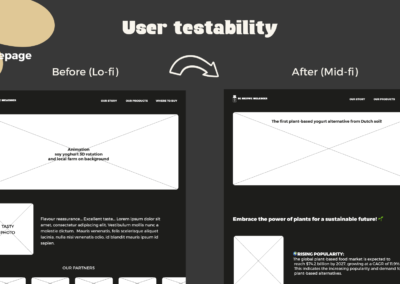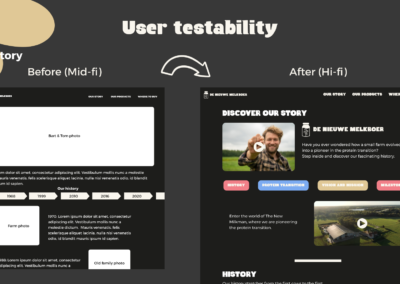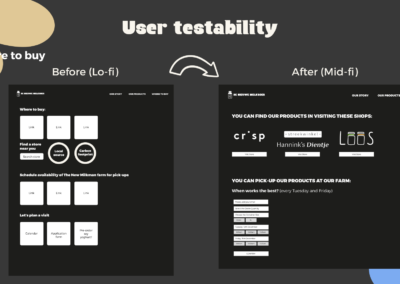The New Milkman – A plant-based revolution in UX Design
A journey towards sustainable connections
“Where tradition and innovation come together.”

Somewhere between the expansive fields of the countryside and the bustling streets of Amsterdam, an idea took root. Bart and Tom, former dairy farmers, were faced with a growing trend towards plant-based alternatives, driven by ethical and health-conscious consumers. This marked the inception of “De Nieuwe Melkboer” (The New Milkman), where tradition and innovation intersected, and the journey towards a more sustainable, meaningful connection with food began.
Problem statement: Ethical, health-conscious consumer seeks sustainable, meaningful connections; requires understanding of local artisanal yogurt to build trust.
To build this trust, understanding local artisanal yoghurt is essential, as it is at the heart of The New Milkman’s mission to honour traditional values while breaking new ground.
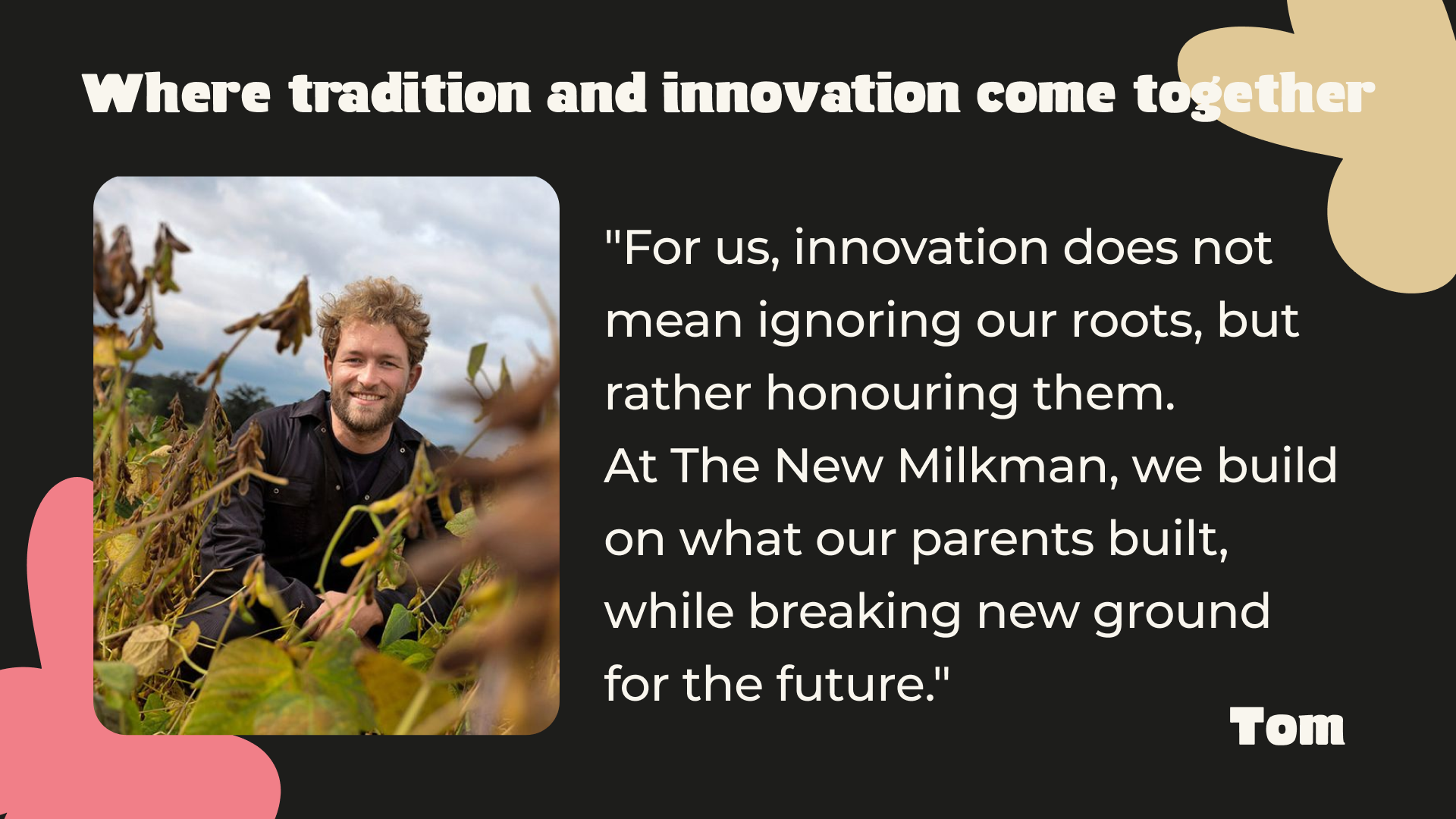
Situation analysis: Strengthening trust
“The power of meaningful experiences.”
The project faced a challenge: creating a digital experience that would not only showcase The New Milkman’s products, but also build trust among ethical, health-conscious consumers. An understanding of local, artisanal yoghurt was crucial to build this trust.

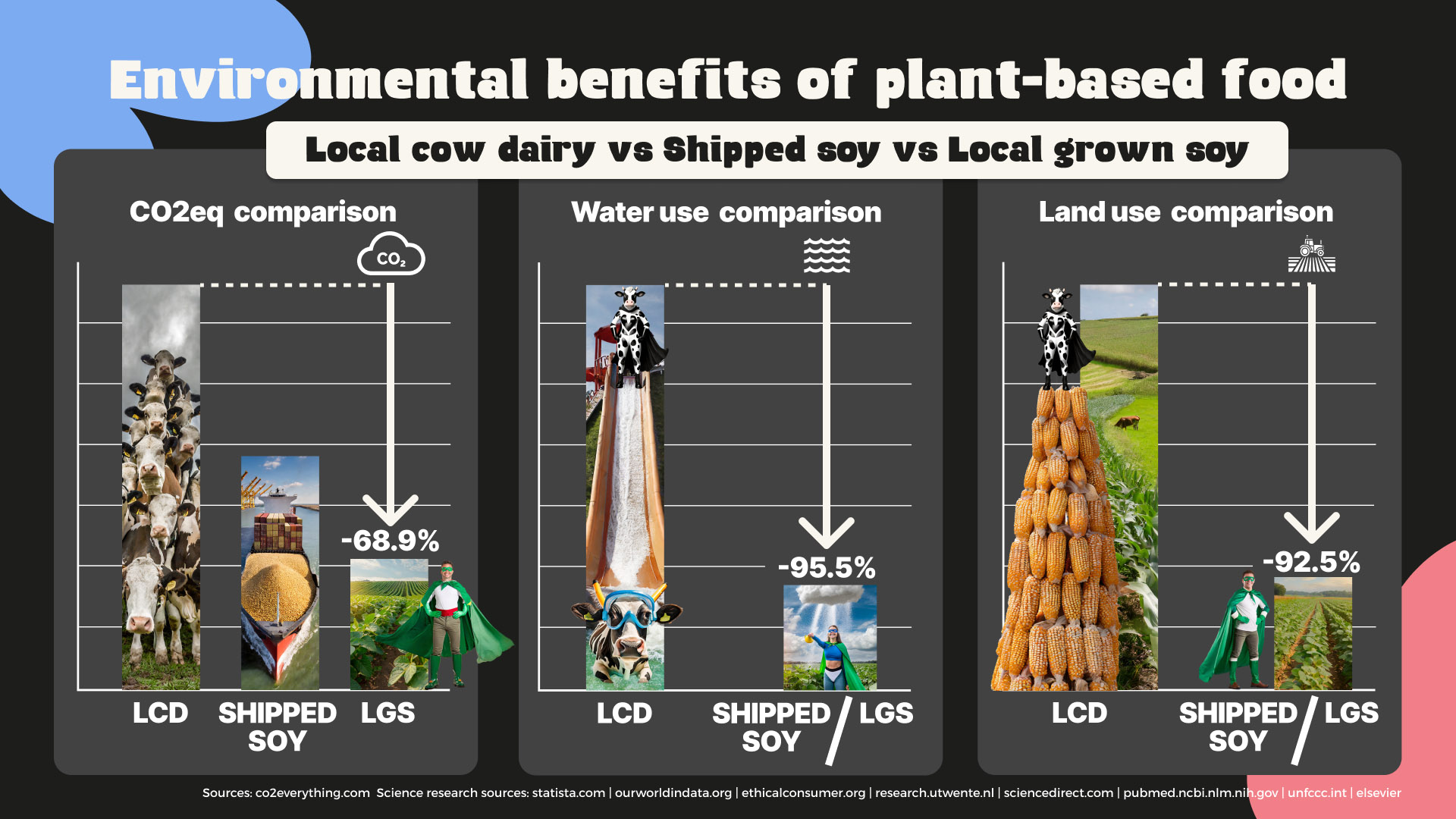
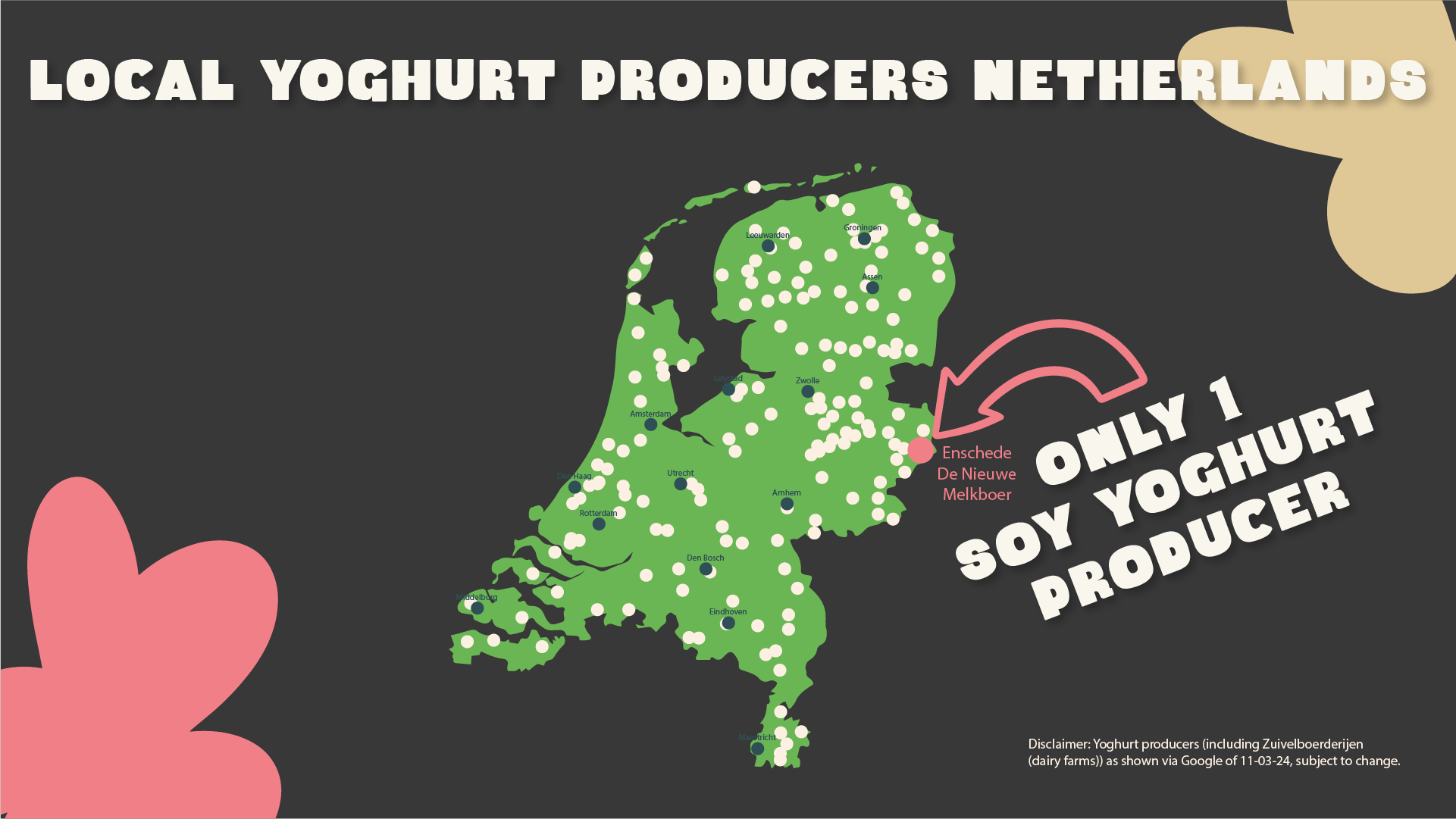

Solution: A story of transparency and purpose
“Our path to purposeful design solutions.”
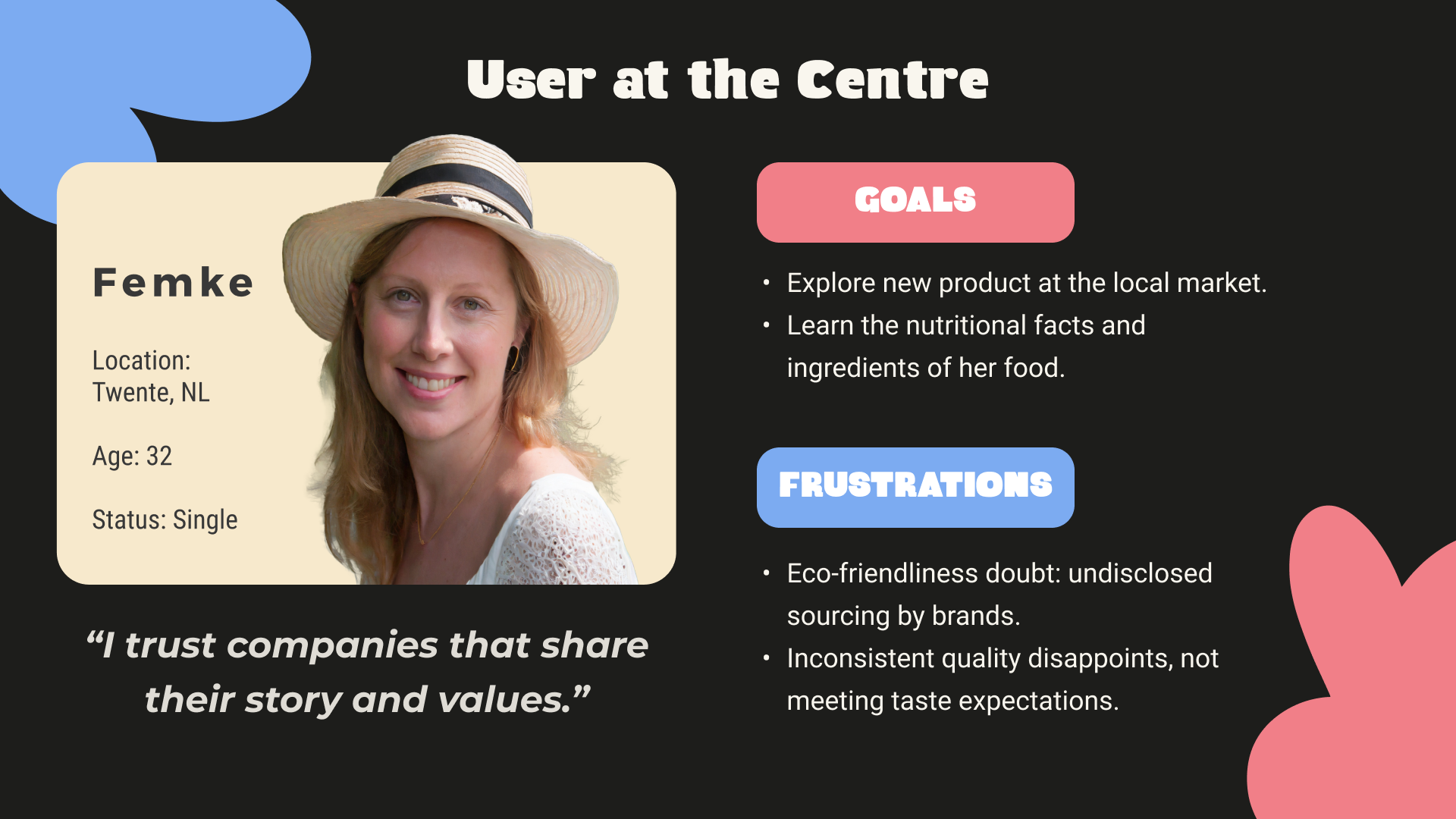
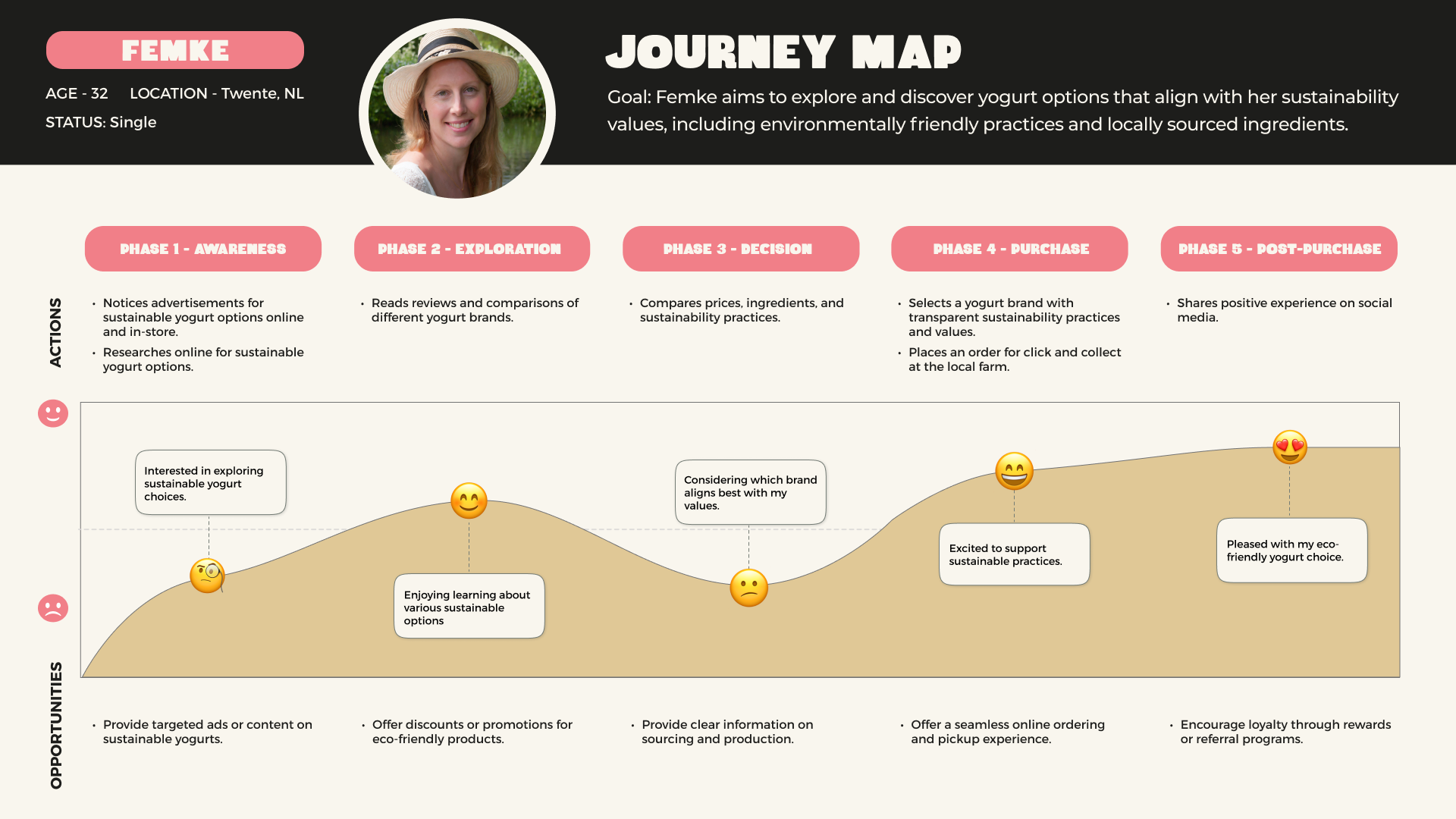
The design process of The New Milkman was founded on transparency and purpose. Through close collaboration with stakeholders and in-depth research, a digital experience was crafted that not only informed but also inspired. Every decision and design detail aimed to embody the brand’s core values: ethics, health, and sustainability.
Results and lessons learned: The power of meaningful experiences
The New Milkman platform received positive feedback from users during the testing phase. Although still in the prototype stage and tested at various levels of detail, from low-fidelity to high-fidelity, the results are promising.
Based on our user tests, we can expect that upon the actual implementation of the prototype, the platform will contribute to the brand’s success by fostering increased consumer trust.
The focus on transparency, health, and sustainability in design has led to a positive user experience, making consumers feel more engaged with the brand. This underscores the importance of meaningful experiences in building sustainable consumer relationships.

Before and After
Conclusion: An ethical approach
In a world increasingly focused on ethics and sustainability, it’s essential to forge connections that go beyond just the products we consume. This case study not only highlights the importance of an ethical approach in UX Design but also the power of storytelling to create meaningful connections. This insight, along with my ongoing pursuit of meaningful designs, has led me to share this story here in this case study.
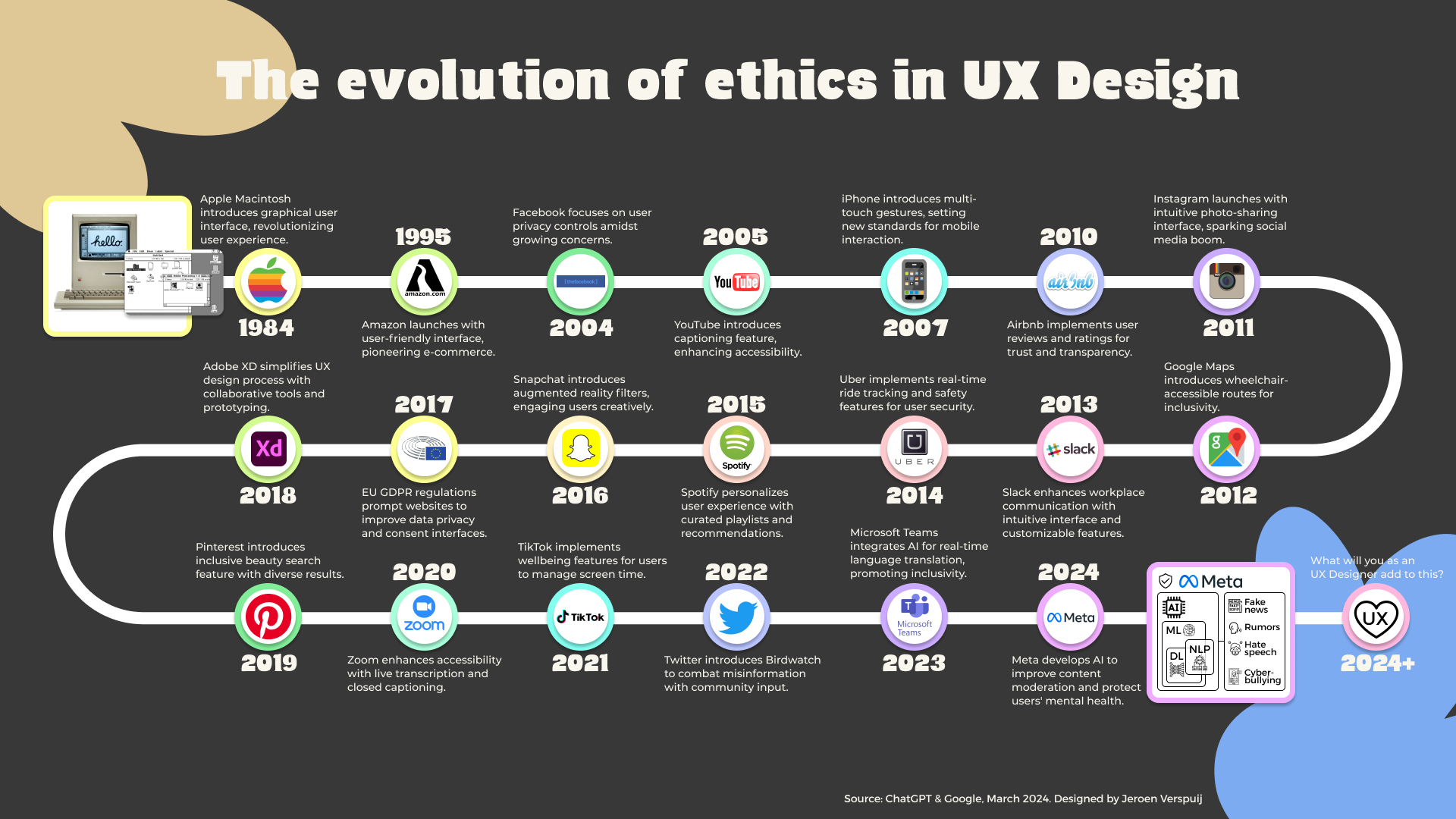
Ready to take the next step forward?
Thank you for delving into my case study!
Are you intrigued by the potential of user-centric design and ethical practices in design?
Let’s discuss how we can create meaningful experiences together.
Resources on the protein transition, soy growers and environmental and health benefits
Partners of The New Milkman
- Provincie Overijssel
- Erve Mentink
- Agrifirm
- Lekker Lupine! (Tasty Lupin!)
- Wageningen University & Research
- De Nieuwe Boerenfamilie
- Transitie Coalitie Voedsel (Transition Coalition Food)
- Maatschap Wij
- De Ondernemer (The Entrepreneur)
- Peas of me
- Gritd Startup consultion
- ZLTO
- Foodvalley The Protein Transition Map NL
- Foodvalley The New Milkman Winner Protein shift 2020
- Bean meal
- Boerschappen
- Crisp
- SLA Salad bar
- PUUR & LOOS
- Hanninks Dientje
Foodagribusiness
Social media
The New Milkman in Media
- BNR – Transitioning dairy
- RTL Nieuws – Cows sold, only soy milk left
- NRC – Milk from cows and green plants
- AD – New profession soy milk farmer
- CBS – Protein crops slightly up
- Twente
- Food inspiration
- Salland – Milk farmer without cows
- Naober – Nedersoja
Environmental benefits plant-based food (versus dairy food) science research:
- University Twente: The water footprint of soy milk and soy burger and equivalent animal products
- University Twente: The green, blue and grey water footprint of crops and derived crops products
- Pub Med: Reducing food’s environmental impacts through producers and consumers
- Science direct: Mitigating climate change through diet choice: Costs and CO2 emissions of different cookery book-based dietary options in Germany
- Science direct: Recoupling livestock and feed production in the Netherlands to reduce environmental impacts
- Science direct: Assessing the carbon footprint across the supply chain: Cow milk vs soy drink
- IDH: European soy monitor 2019 (soy from for stock feed!)
- United Nations: Land Use, Land-Use Change and Forestry (LULUCF)
- Blonk: Agri-footprint – The world’s leading source of environmental footprint data for the agri-food sector
- Statista: Which (Plant) Milk Is the Most Sustainable?
- Springer Link: Land-use-driven biodiversity impacts of diets—a comparison of two assessment methods in a Finnish case study
- Elsevier: The water footprint of soy milk and soy burger and equivalent animal products
- Bastyr University: Which Milk Alternative is the Most Eco-Friendly?
- Our world in data: Dairy vs. plant-based milk: what are the environmental impacts?
- Ethical consumer: Plant based milks versus dairy milk
- WWF: Stepping up? The continuing impact of EU consumption on nature worldwide
- 8 Billion trees: Carbon Footprint of Milk vs Soy Milk vs Almond Milk vs Oat
- The conversation: Soy versus dairy: what’s the footprint of milk?
- Austrian Development Agency / Europe SOYA: Minus 82%: Europe Soya certified soybean meal avoids CO₂ emissions
- The conversation: Which ‘milk’ is best for the environment? We compared dairy, nut, soy, hemp and grain milks
- Pub Med: Health impacts and environmental footprints of diets that meet the Eatwell Guide recommendations: analyses of multiple UK studie
Soy yoghurt (health) benefits scientific research
- Nutritional value and health – Sojayoghurt has higher protein content and less saturated fat than cow’s milk yogurt, beneficial for cholesterol.
- Vegan and lactose-free – Alternative for vegans and lactose-intolerant individuals due to lower fat and calorie content and higher protein content.
- Breast cancer prevention – Diet with fermented soy milk and probiotics may protect against breast cancer and promote overall health.
- Weight management – Soy consumption associated with lower BMI, promotes healthier dietary patterns and weight management.
- Plant-based proteins – Sojayoghurt provides plant-based proteins beneficial for health, especially for lactose-intolerant individuals.
- Blood pressure reduction – Plant-based proteins, like those in sojayoghurt, may lower blood pressure, contributing to cardiovascular health.
- Bone health – Consumption of fermented sojayoghurt with isoflavones may increase bone mineral density and improve bone health.
- Neuroprotection – Sojayoghurt with special bacteria and fibres offers neuroprotective effects against oxidative stress and cell damage.
- Vitamin B12 – Sojayoghurt enriched with vitamin B12 thanks to special bacteria, beneficial for older individuals and vegetarians.
- Comparison with cow’s milk yogurt – Sojayoghurt healthier than cow’s milk yogurt due to higher protein content, fibres, and phytochemicals, supported by scientific research.
Some key EU regulations to address climate goals and promote the transition to plant-based food, include:
- The European Green Deal
- Farm to Fork Strategy
- European Climate Law
- Common Agricultural Policy (CAP) Reform
- Regulations on Food Labelling and Sustainability
EU Subsidies for Plant-Based Farmers:
- Agri-environment and climate measures: Subsidies for farmers adopting eco-friendly practices, like growing protein crops, reducing fertiliser use, and promoting soil health.
- Rural development programmes (RDP): Financial support for farmers transitioning to plant-based agriculture, including subsidies for cover crops and agroforestry systems. Rural development programmes by country.
- Innovation and research projects: EU funding for research and innovation in sustainable agriculture, aiding the development of new crops and cultivation methods. Innovation examples success stories – Agriculture & food
- Market and price support measures CAP 2023-27: EU subsidies to enhance competitiveness of plant-based products, encouraging the transition to a more plant-based food system.
